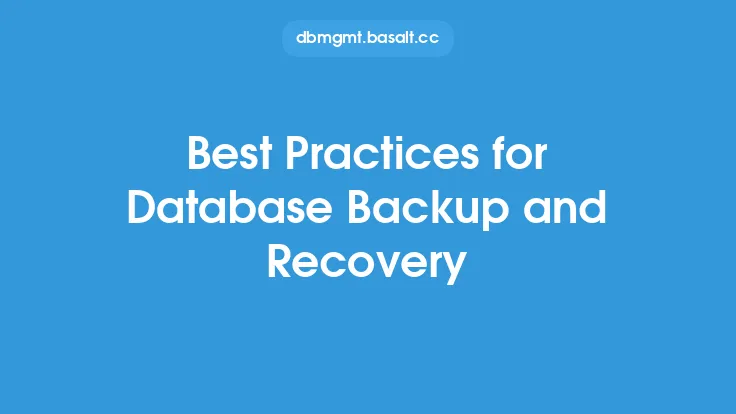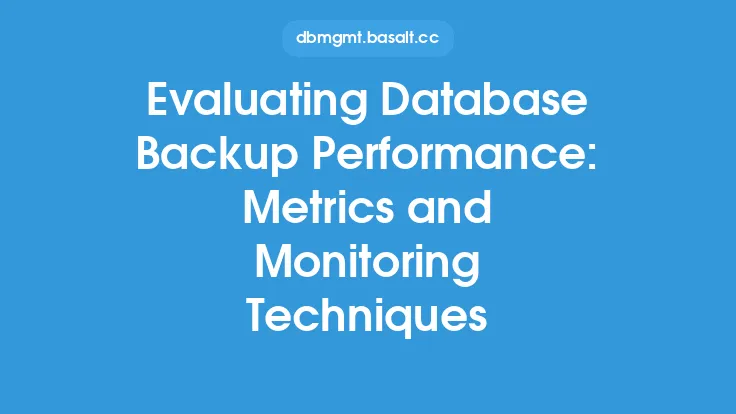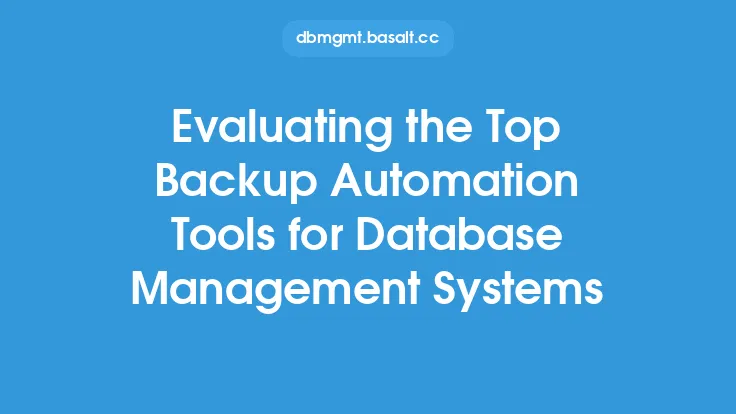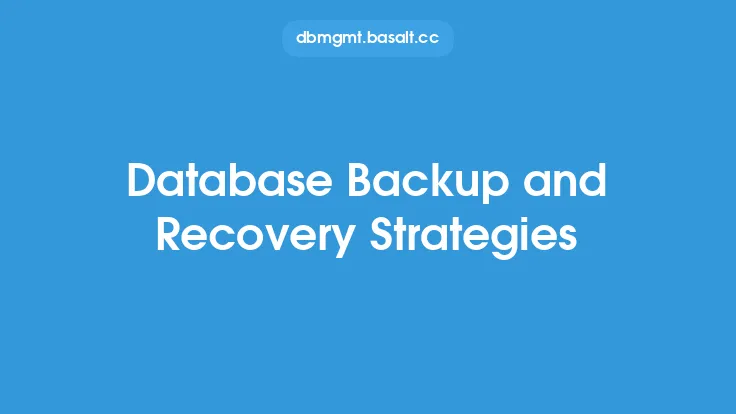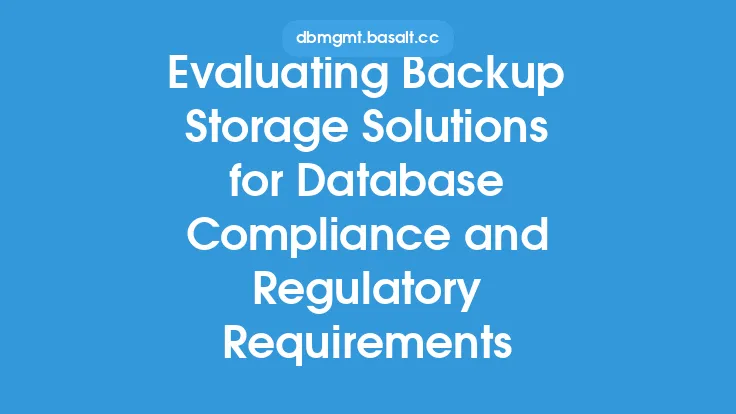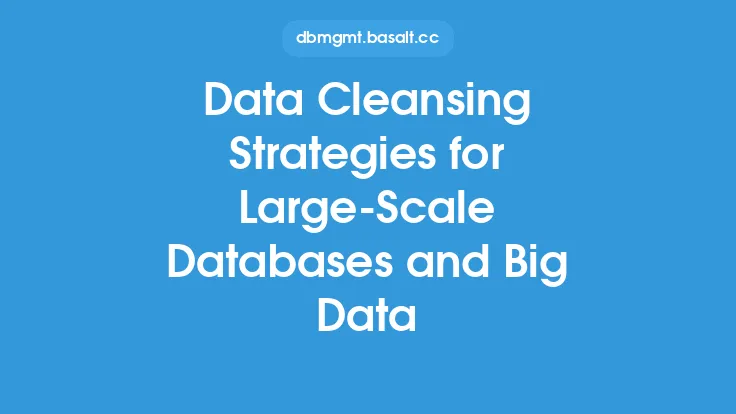In today's complex and data-driven world, databases play a crucial role in storing and managing vast amounts of information. As the volume and complexity of data continue to grow, ensuring the integrity and availability of databases becomes increasingly important. One critical aspect of database management is backup and recovery, which enables organizations to protect their data from loss, corruption, or other disasters. In multi-database environments and complex systems, developing a robust database backup strategy is essential to minimize downtime, ensure business continuity, and maintain data consistency.
Introduction to Multi-Database Environments
Multi-database environments refer to systems that comprise multiple databases, which can be from the same or different vendors, and may be distributed across various locations. These environments can be challenging to manage, especially when it comes to backup and recovery. Each database may have its own backup and recovery requirements, and the complexity of the system can make it difficult to develop a comprehensive backup strategy. To address these challenges, organizations need to consider several factors, including data consistency, backup windows, and recovery time objectives (RTOs) and recovery point objectives (RPOs).
Understanding Database Backup Strategies
A database backup strategy is a plan that outlines how an organization will protect its databases from data loss or corruption. The strategy should take into account the organization's business requirements, data criticality, and system complexity. In multi-database environments, the backup strategy should be tailored to meet the specific needs of each database, while also considering the overall system architecture. There are several types of database backups, including full, incremental, and differential backups, each with its own advantages and disadvantages. Full backups involve copying all data in the database, while incremental backups capture only the changes made since the last backup. Differential backups, on the other hand, capture all changes made since the last full backup.
Backup Strategies for Complex Systems
Complex systems, such as those that involve multiple databases, applications, and storage systems, require specialized backup strategies. These strategies should take into account the interdependencies between different components of the system and ensure that data consistency is maintained across all databases. One approach to backing up complex systems is to use a hierarchical backup strategy, where each level of the hierarchy is backed up separately. For example, a full backup of the entire system can be performed at the top level, followed by incremental backups of individual databases or applications. Another approach is to use a distributed backup strategy, where each database or application is backed up independently, using a combination of full, incremental, and differential backups.
Considerations for Multi-Database Environments
In multi-database environments, several factors need to be considered when developing a backup strategy. These include data consistency, backup windows, and RTOs and RPOs. Data consistency refers to the need to ensure that data is consistent across all databases, even in the event of a failure. Backup windows refer to the time available for backing up each database, which can be limited in complex systems. RTOs and RPOs, on the other hand, refer to the time it takes to recover from a failure and the point in time to which data can be recovered, respectively. To address these challenges, organizations can use techniques such as database replication, which involves maintaining multiple copies of data in different locations, and backup compression, which reduces the size of backup files and improves backup performance.
Technical Considerations
From a technical perspective, several factors need to be considered when developing a database backup strategy for multi-database environments and complex systems. These include the type of database management system (DBMS) used, the storage infrastructure, and the network architecture. For example, some DBMSs, such as Oracle and Microsoft SQL Server, have built-in backup and recovery tools that can be used to develop a comprehensive backup strategy. Others, such as MySQL and PostgreSQL, may require third-party backup tools. The storage infrastructure, including disk storage, tape storage, and cloud storage, also plays a critical role in backup and recovery. Finally, the network architecture, including the use of local area networks (LANs), wide area networks (WANs), and the internet, can impact backup performance and data transfer times.
Best Practices for Database Backup Strategies
To develop a robust database backup strategy for multi-database environments and complex systems, several best practices should be followed. These include developing a comprehensive backup plan that takes into account the organization's business requirements and system architecture, using a combination of full, incremental, and differential backups, and testing backup and recovery procedures regularly. Additionally, organizations should consider using automation tools to streamline backup and recovery processes, monitor backup performance and data integrity, and ensure that backup data is stored securely and can be recovered quickly in the event of a failure. By following these best practices, organizations can ensure that their databases are protected from data loss or corruption and that business continuity is maintained.
Conclusion
In conclusion, developing a robust database backup strategy is critical for protecting data in multi-database environments and complex systems. By understanding the challenges and considerations involved, organizations can develop a comprehensive backup plan that meets their business requirements and system architecture. By using a combination of full, incremental, and differential backups, and considering technical factors such as DBMS, storage infrastructure, and network architecture, organizations can ensure that their databases are protected from data loss or corruption. Additionally, by following best practices such as automation, monitoring, and testing, organizations can ensure that their backup and recovery processes are efficient, reliable, and secure.
